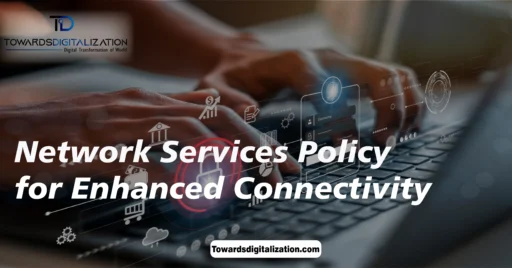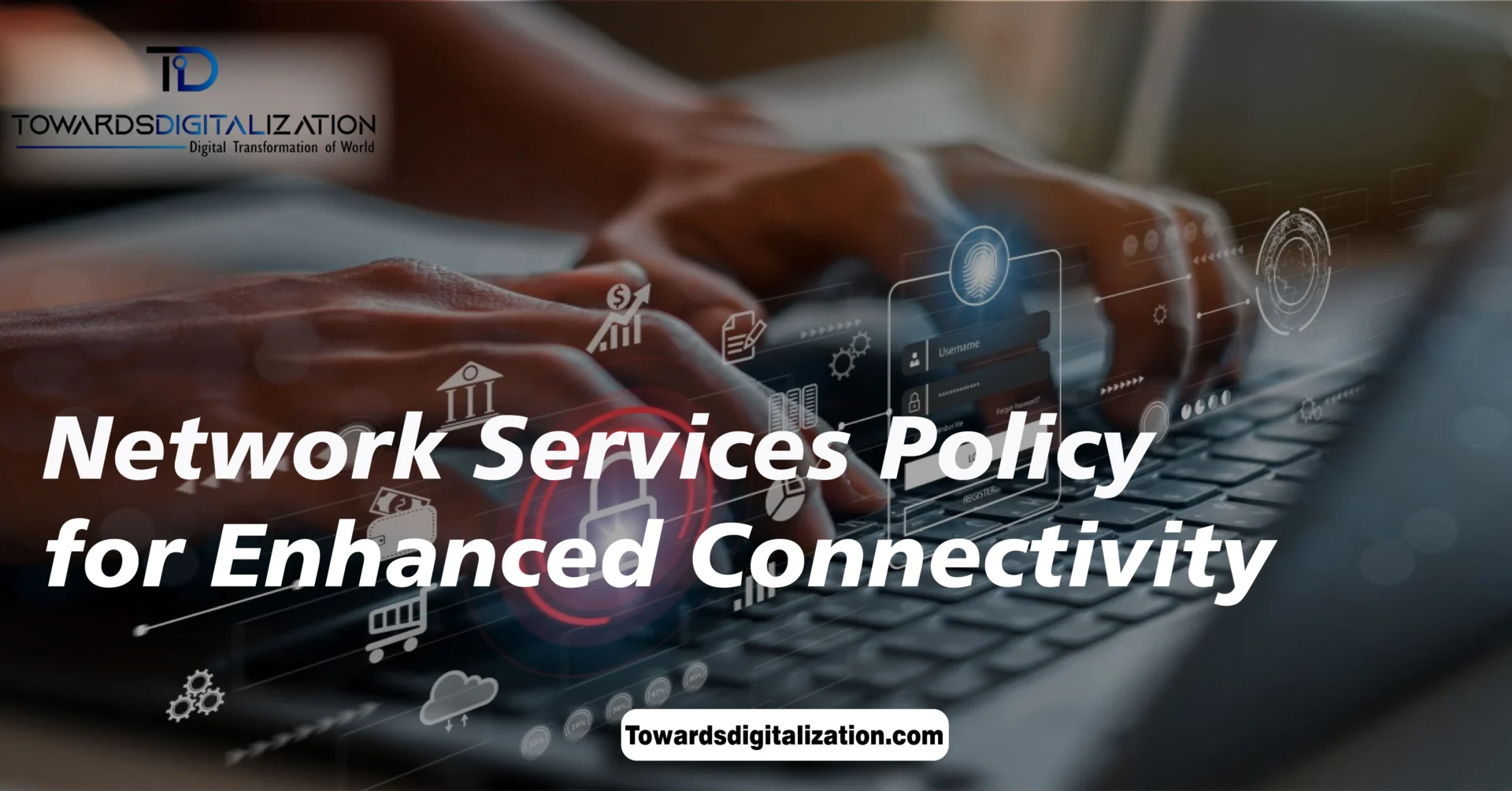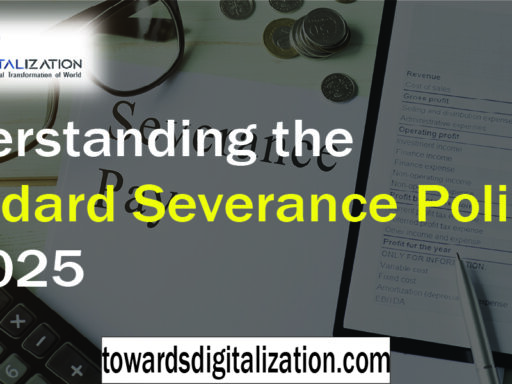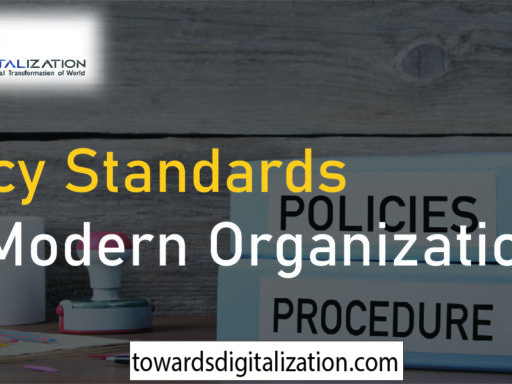Introduction
Network service policies offer explicit guidelines, regulations, and guidelines for managing, delivering, and using networks within an organization or connected system. They provide guidelines for arranging, controlling, and securing network services to optimize performance while minimizing the risk of misuse, unauthorized utilization, or technological failure. Here’s an outline for the perfect Network Services Policy that organizations might develop. I’ll also include important structures such as the area’s definitions, sections and best practices.

Network Services Policy sets guidelines regarding the management and use of the network’s facilities and services like switches, routers or servers along with DNS, DHCP and communication devices dependent on them. It is designed to ensure the security of network services and be robust and effective, offering users access, accessibility, and appropriate usage along with performance optimization assessments of risks and alignment with legal or regulatory standards.
Purpose of Network Services Policy
The Network Services Policy is designed to provide guidelines to ensure the security of network usage within an organization. It ensures that the network infrastructure is safe and reliable and meets the company’s objectives while safeguarding sensitive data from exploitation.
Key Goals of a Network Services Policy:
Define Acceptable Use:
- Create rules that govern the permissible and acceptable use of network services.
- Outline the prohibited behaviour, for example, accessing sensitive information without authorization or participating in criminal acts without permission.
Enhance Security:
- Protect your network from internal and external threats, including insecure access, malware attacks and data leaks.
- Create protocols to secure your data, authenticate and monitor, and guarantee reliability and availability.
Ensure Reliability and Availability:
- Maintain the integrity and availability of the network’s services for everyone.
- Reduce downtime by regular maintenance, monitoring, and response to any incidents.
Support Compliance:
- Verify that the company respects all applicable rules, standards and laws (e.g. GDPR HIPAA, ISO 27001).
- Establish processes that protect important data stored in networks.
Define Roles and Responsibilities.
- The role and responsibility of the IT personnel, administrators of networks, and users in managing and utilizing network services.
- Make sure that you are accountable for the compliance of the guidelines.
Promote Standardisation:
- Follow the same guidelines for setting up, protecting, and managing devices and services.
- It allows for rapid scaling up and troubleshooting.
Incident Response and Recovery:
- Provide instructions on determining, documenting and addressing network-related issues, including outages, breaches and other security issues.
- Outline steps that can help with disaster recovery and network business continuity.
Monitor and Audit Usage:
- Check network activity for signs of illegal activities and stop unlawful activities. Maintain accountability and transparency through periodic audits and report writing.
- Making and adopting the Network Services Policy are effective methods for reducing network risks, enhancing performance, and aligning the network’s management to an organization’s strategic goals.
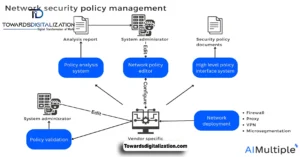
Scope
The coverage of Scope of Network Services Policies determines its limits within a system or organization in a way that outlines how the policies are applicable and what components of the system, service procedures, users, and the system come under its regulations. Here’s a summary of the common coverage
Organisational Coverage:
Departments and divisions: The rule includes departments, divisions, and subdivisions within an institution that are protected (i.e., corporate offices, subsidiaries, and remote branch offices).
Network Resources:
Infrastructure may consist of routers, servers, switches, load balancers, walls, and other hardware components that comprise the infrastructure network.
Connectivity covers wired and wireless network connections within an internal environment, VPNs, virtual private networks (VPNs), and remote connectivity.
Hybrid and Cloud Environments Cloud and Hybrid environments offer cloud-hosted services, hybrid infrastructures, and networks directly connected to the organisation’s infrastructure.
Services:
Internet connectivity and surfing.
Services for messaging and email.
Services for file sharing and storage.
Enterprise Services:
Internal application (e.g. HR, ERP, CRM systems).
Tools for collaboration (e.g., Microsoft Teams, Slack).
VoIP, or Voice over Internet Protocol (VoIP), and Conferconferencingrnal Services:
Users:
Authorized Users: Identifies those who are authorized to use the network’s services (e.g. employees, guests, contractors, interns).
Access Levels: Determine the rights and roles given to users (e.g. admin guest, regular user).
Non-human entities include IoT devices, automated scripts, and service accounts.
Geographical Scope:
Global as opposed to. Local: International as opposed to Local. This process determines whether the rule is applicable globally or just to regional offices.
Remote Access: Gives users access to the Internet via distant or foreign locations.
Security Domains:
External and Internal traffic: This section explains whether the rule applies only to internal communications or if other communications could also be covered.
Data Sensitivity: This could refer to the capacity to classify personal or particular data (PII).
Compliance and Regulatory Boundaries
Legal Compliance: Observance of legislation such as GDPR, HIPAA, and PCI DSS, which is related to the use of networks.
Industry Standards include Best Practices and Certifications (e.g., ISO 27001).
Time frame:
Continuous Applicability Policy can be created to apply constantly or in certain instances (e.g., events or audits).
Revisions and updates: Provide plans for periodic review and updates as the network expands, including updating the policy.
Exceptions
This policy does not apply to particular circumstances, like when certain systems aren’t completely integrated into the new infrastructure.
Third-party service providers with particular policies.
Roles and Responsibilities.
Set the foundations, guidelines and roles essential to ensure a corporate network infrastructure’s safe and efficient operation. An average policy could define these roles and responsibilities.
Network Administrator/Engineer:
- If given this task, the Administrator’s or Engineer’s main responsibilities will be managing, configuring, and maintaining infrastructure (routers as well as firewalls, switches and other devices) utilized by networks (routers and switches, for instance).).
- Be sure that your business adheres to security protocols and regulations.
Security Enforcement:
- Install access controls such as firewalls, access controls, and intrusion detection/prevention systems.
- Check regularly and install software patches, updates, and fixes.
Performance monitoring:
- Check for and fix issues to keep uptime and the effectiveness of your system.
Documentation:
- Keep up-to-date documentation for the network configurations and processes.
Incident Response:
- Integrate incident response into every aspect of management for your network as required.
- Respond to incidents involving networks by investigating the cause and correcting the issue.
- IT Security Officer Policy Development
Policy Development:
- Network security requirements are being developed in conjunction with all the major stakeholders.
Audit and Compliance:
- While configuring and using your network, be sure to audit the configurations frequently to ensure they are in line with the internal guidelines and the external rules to be sure that they comply with the procedures.
Key Components of the Policy Framework:
Access Control Rules: Guidelines to grant, modify or rescind access to resources on the network,
Modification or revocation of access or access to the Internet or other Internet-related resources.
Acceptable Usage:
These guidelines outline acceptable usage patterns for networks and services.
Secure Measures: Procedures for finding, logging and minimizing network-related incidents.
Periodic reviews: Regular assessments of network performance and policy efficiency.
The comprehensive method of assigning the roles will ensure accountability, minimize the risk, and help create safe and efficient networks.
Network Services Policy Provision.
Service Availability:
- Services for network connectivity should be available for maintenance during scheduled times, and any downtime not scheduled for maintenance must be communicated to stakeholders and users when it happens.
- Backup and redundancy services must be in place to ensure service availability and recovery in the event of loss.
Service Level:
- The agreements (SLAs) must define acceptable network performance standards, such as time, latency and throughput.
- Performance metrics and periodic reports must be provided to assess the services’ effectiveness.
Access Control for Network Services Policy:
- Access to network services must be determined based on the least possibility of privilege. This means that only the right to access is granted to allow them to complete their assigned tasks.
- Procedures for authorization and authentication (such as multi-factor authentication or access control based on roles) must be implemented.
Security Measures.
The Network Services Policy outlines security measures that provide essential guidelines, protocols, and procedures to protect the integrity, confidentiality, and accessibility of network-related services. They concentrate on identifying potential threats to the system and ensuring secure connections between devices, users, and services. Below is a summary of the policies that might include:
Objectives for Network Services Policy:
- The principal objective of network security is to guard against interruption, unauthorized access or a breach.
- Establishing a system to ensure the security of endpoints and infrastructure is an integral part of the goal.
Data Security Network Services Policy:
Secure all sensitive data transmitted via networks to prevent third-party access and ensure the information is protected while it is being transferred.
Use firewalls and network segmentation to guard vital systems from attacks and protect them from risks.
Monitoring and Logging:
- Services on the network should be frequently examined for suspicious activity, such as performance-related issues or security risks.
- The logs of activities on the network (access attempts, configuration modifications and so on) should be reviewed regularly.
Incident Response Plan (IRP):
- An emergency response plan must be implemented to handle security-related incidents or disruptions of services.
- In the context of business continuity plans, network service interruptions should be handled appropriately.
Usage Guidelines
Acceptable Uses:
- Network services are only used for operations or business-related activities and are performed with clear supervision from management.
- Unlawful downloads, unauthorized access or a malicious act such as hacking are unavoidably prohibited.
Device Management:
- The devices connected to networks need to be secure with current security software for antivirus and strong passwords, as well as patches that comply with the standards of networks.
Maintenance and Support
It is a Maintenance and Support of Network Services Policy that guarantees the safety and security of the network’s infrastructure. Periodic updates, monitoring and troubleshooting, ensure no interruptions in service; access security measures are a scheduled maintenance minimizes downtime to ensure maximum performance while ensuring standards for monitoring compliance. The documentation of each task helps monitor the compliance level and helps plan for the future.
Updates and Patches:
Network administrators and device manufacturers should apply patches and security updates to protect networks and devices from intrusions by hackers and reduce the possibility of cybercriminals hacking them.
Compliance and Audits
To ensure the protection of the security and stability of networks, the entire system and process should be in line with recognized organizational and regulatory guidelines.The employees and stakeholders should work in concert with auditors and assist them by promptly giving all documents required as required. Corrective measures, such as corrective actions or disciplinary measures, promptly rectify infractions that aren’t in line with the rules. The team documents and reviews the audit findings, using them to control the process, while restricting access to only authorized employees to ensure privacy.
- Network services should comply with standards set by the industry and laws, including GDPR, HIPAA, PCI-DSS, and any other local regulations that affect their operation.
Enforcement and Violations about Network Services Policy
- Policy Overview: A brief overview of Network Services Policies designed for networks to provide secure, reliable, ethical and effective use of resources. Unauthorized access, misuse or use, and illegal actions performed without permission.
- Enforcement Tools for monitoring, audits and access controls offer efficient ways of ensuring compliance with guidelines. Violators face sanctions such as suspensions of accounts or legal action for violations.
- Common Sense: Examples are sharing confidential information and accessing restricted areas with no authorization or installation of malware.
- Notifying Infractions: Users must submit infractions to IT administrators to allow them to determine and rectify the problem in the shortest time possible.
- Exacerbation: Repeated violations may lead to increased fines or even dismissal. These could lead to a higher financial penalty or dismissal entirely.
- Prevention: Regularly scheduled user training and system updates can reduce the risk.
- Transparency: To ensure compliance, it is necessary to provide transparent disclosure of the regulations.
- Reputation: Users are responsible for observing the rules of the system
Future of Network Services Policy
Future network policies should focus on adaptability, security, inclusion, and accessibility. Security measures for cyberspace provide users with security from constantly evolving security threats while protecting user information and accommodating the increasing demands for bandwidth to allow for worldwide connectivity. Collaboration between tech firms, stakeholders, and regulators will ensure lation fairness.
References
OWASP Foundation
Web application best practices: security: https://owasp.org
ISO 27001 Standards
International Standards for Information Security Management: https://www.iso.org
PCI DSS Guidelines
Security standards for payment card data protection: https://www.pcisecuritystandards.org



